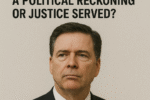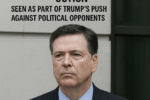US Expands Military Operations in the Caribbean: What It Means, Challenges & Implications
🛡️ Introduction
In 2025, the United States has significantly ramped up its military presence in the southern Caribbean. The stated aim: crack down on drug trafficking networks and deter so-called “narco-terrorism.” But the move has sparked debate—over legality, regional stability, and unintended consequences. This article breaks down what’s happening, why it matters, and what observers should watch next.
1. Background: Why Now?
- Policy shift & authority expansion
In August 2025, the U.S. administration authorized the Pentagon to use force against Latin American drug cartels designated as terrorist groups. This gives military assets broader latitude in maritime anti-narcotic operations. Wikipedia+1 - Forces and assets deployed
The deployment includes at least eight warships, a nuclear-powered submarine, Marines, and aerial surveillance. Anadolu Ajansı+3AP News+3The Economic Times+3
It also ties into long-standing U.S. efforts like Joint Interagency Task Force South and multinational anti-drug operations. Wikipedia+2Grey Dynamics+2 - Recent actions
- On 2 September, the U.S. carried out an airstrike on a vessel linked to Venezuela, reportedly killing 11 people. Wikipedia+2AP News+2
- A joint U.S.–Dominican operation later recovered about 1,000 kg of cocaine from a speedboat destroyed in the action. Al Jazeera+2AP News+2
2. Strategic Logic & Goals
| Objective | Explanation |
|---|---|
| Disrupt supply chains | Intercept drug shipments before they reach U.S. markets |
| Deterrence | Signal that operations carry real military consequences |
| Pressure Venezuela | Targeting vessels allegedly coming from Venezuela increases leverage |
| Political positioning | Demonstrate “tough on drugs” credentials ahead of elections |
In public statements, U.S. officials frame cartels as threats akin to terrorist groups—a narrative that seeks to justify the military escalation. Wikipedia+2AP News+2
3. Risks & Critiques
a) Legal & sovereignty issues
Doing strikes or sinkings on vessels must navigate complex maritime law and rules of engagement. Critics warn that actions may violate international norms. Military Times+1
Venezuela, in particular, has condemned the U.S. moves as violations of sovereignty. AP News+1
b) Collateral damage & misidentification
Local fishers in Trinidad have voiced anxiety over being misidentified as smugglers near patrol zones. The Guardian
In chaotic confrontations, the chance of harming innocents or uninvolved vessels is nontrivial.
c) Resource strain
Naval experts point out that the U.S. Navy is already stretched, and committing more assets to the Caribbean may impact readiness elsewhere—especially in the Pacific. Military Times
d) Escalation risk
If operations push into Venezuelan waters or further inland, the situation could spiral. Some analysts see this as a test of senior U.S. executive powers. AP News+1
4. Regional & Global Impacts
- Venezuelan military mobilization
In response to U.S. pressure, Venezuela announced plans to deploy 25,000 additional troops in coastal states to counter trafficking. Reuters - Political backlash & diplomacy
Some regional governments support the operations as shared security goals; others see them as overreach or even aggression. The Guardian+1 - Drug trafficking patterns may adapt
Cartels are likely to shift routes—perhaps toward less patrolled areas or using more sophisticated smuggling tactics. - International cooperation spotlighted
Canada, the Netherlands, and other partners are already part of maritime anti-drug efforts in the Caribbean, embedding U.S. law enforcement teams aboard allied vessels. Grey Dynamics
5. What to Watch Next
- More strikes or judicial oversight
Will the U.S. scale up lethal operations, or will Congress or courts intervene? - Venezuela’s response
Will Maduro escalate militarily? Will he engage in negotiations? - Trafficking route shifts
Data on seizures and trends in smuggling routes will be a crucial barometer. - Casualty transparency & legal scrutiny
Independent investigations or human rights groups may challenge claims or demand accountability. - Long-term strategy
Will this buildup be temporary, or become a sustained U.S. presence in the Caribbean?
✍️ Conclusion
The U.S.’s increased military push into the Caribbean marks a bold pivot in the war on drugs—a shift from law enforcement to kinetic deterrence. While the operations may yield tactical successes and recoveries, they also tread into murky legal, moral, and geopolitical terrain. How the balance plays out between asserting control and avoiding unintended fallout will define this chapter of hemispheric security in the years ahead.













